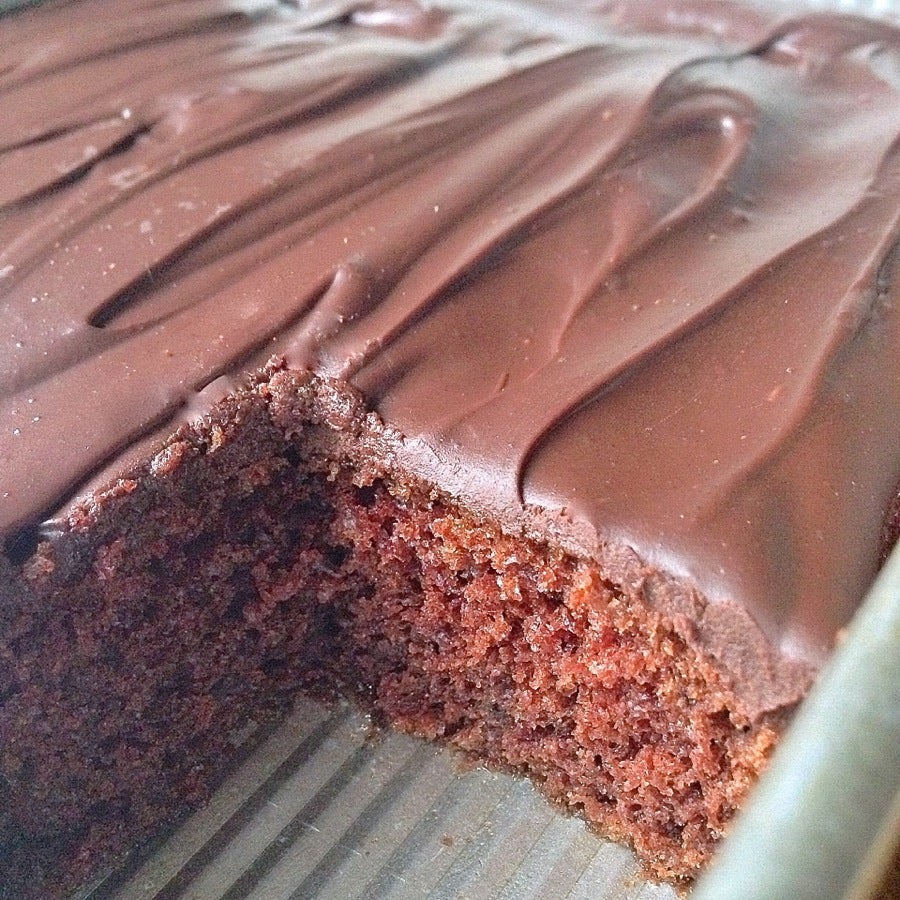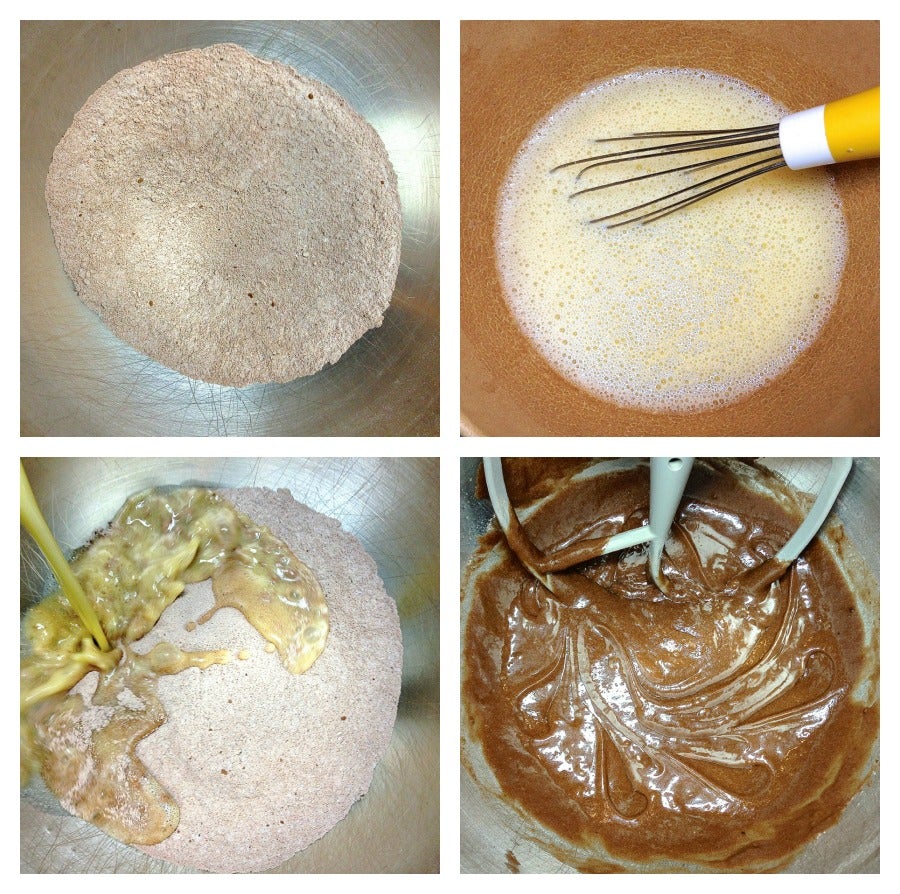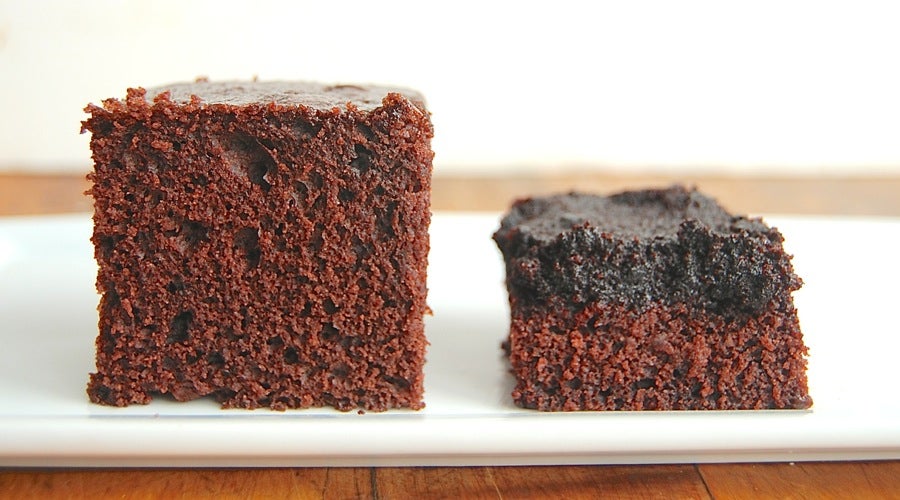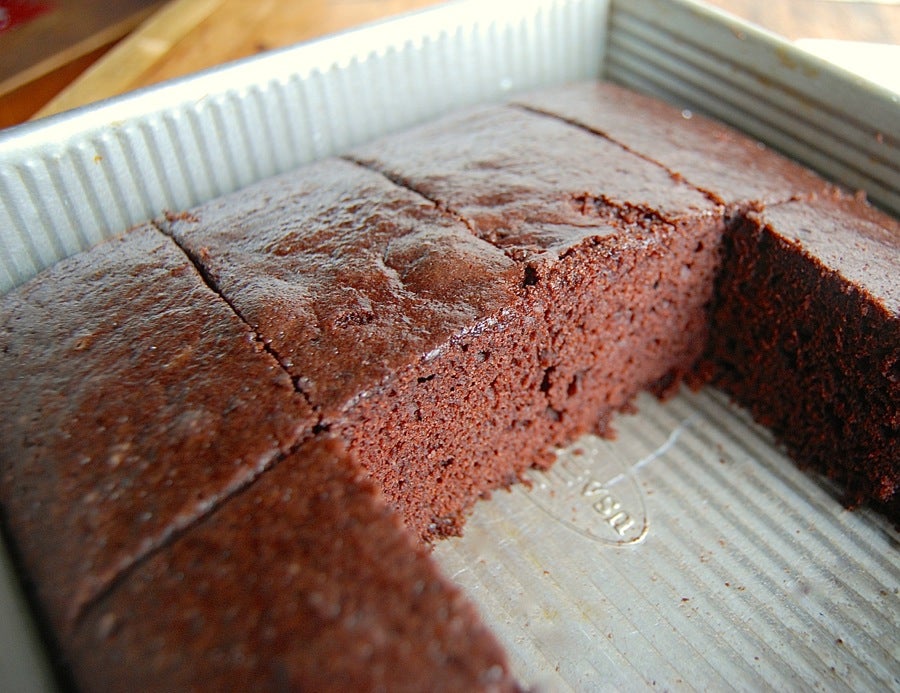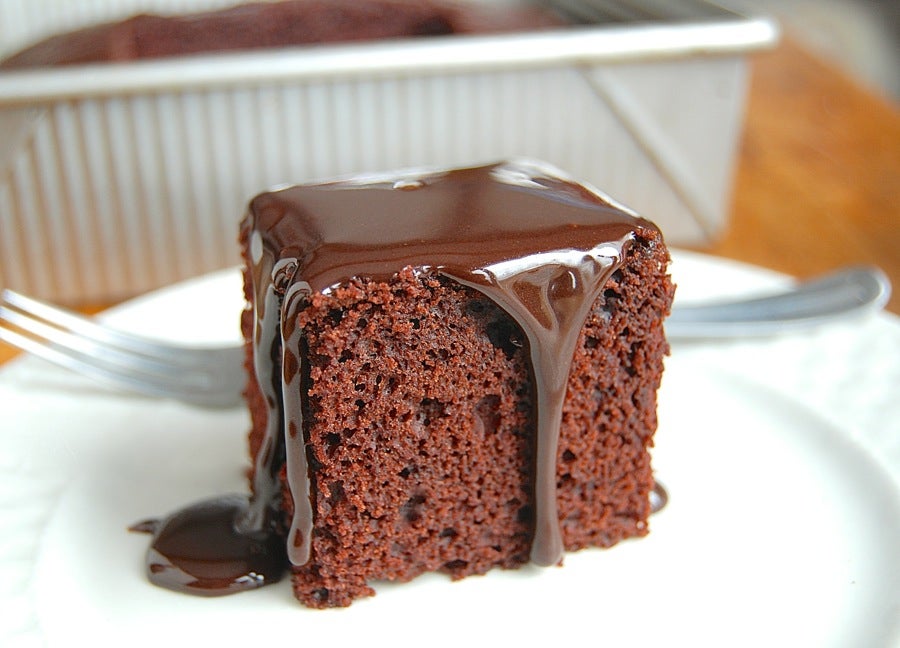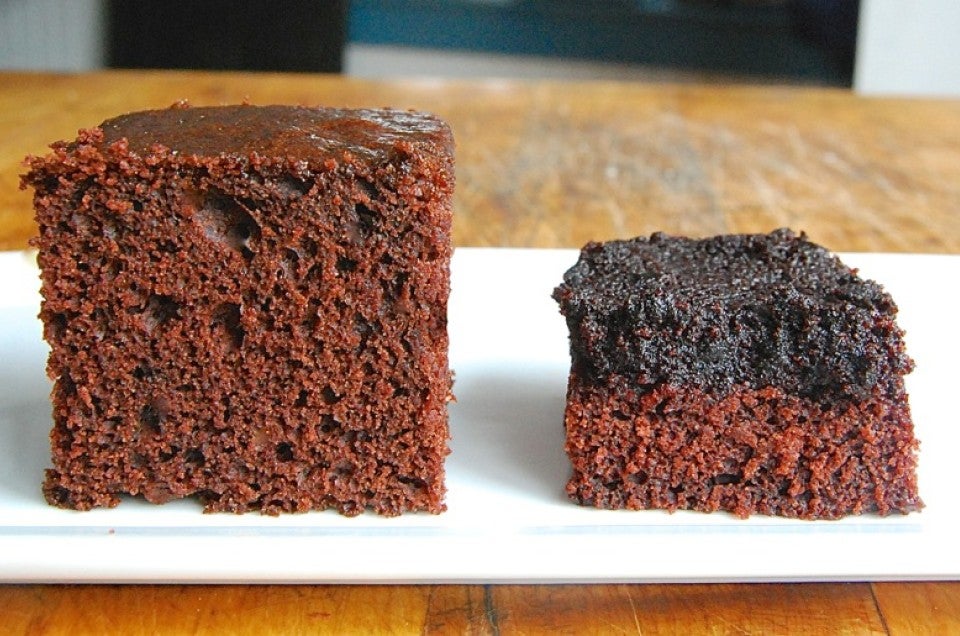


"Can I make this recipe gluten-free by substituting gluten-free flour?"
That's a question we field quite often here at King Arthur Flour. Yes, counterintuitive though it seems, America's oldest flour company is happy to advise you on how NOT to use our classic wheat flours.
And why is that? Because our true mission, one we've pursued for decades – nay, centuries – is to share the pure joy of baking. And that means taking flour and water, butter and eggs, sugar and yeast and milk, and making something wonderful for those you care most about: friends, family, and colleagues. Plus, lately, the guy who plows your driveway.
So you're following a gluten-free diet? We've got you covered. Our gluten-free flour is your new BFF in the kitchen.
But it can't do the job all on its own. It usually needs some help from a couple of other ingredients: one a staple, one that may be new to you.
Let's see how these two key ingredients can help turn our original Cake-Pan Cake into a gluten-free treat.
Here are the ingredients in our original recipe:
1 1/2 cups (177g) King Arthur Unbleached All-Purpose Flour
1 cup (198g) sugar
1/4 cup (21g) unsweetened cocoa, Dutch-process or natural
1/2 teaspoon salt
1/2 teaspoon espresso powder, optional
1 teaspoon baking soda
1 teaspoon vanilla extract
1 tablespoon (14g) vinegar, cider or white
1/3 cup (67g) vegetable oil
1 cup (227g) cold water
And here's the ingredient list for our gluten-free cake. See the difference?
1 1/2 cups King Arthur Gluten-Free Flour
1 cup sugar
1/4 cup natural or Dutch-process cocoa powder
1/2 teaspoon salt
1/2 teaspoon espresso powder, optional
1 teaspoon baking soda
1 teaspoon xanthan gum
1 teaspoon gluten-free vanilla extract
1/3 cup vegetable oil
2 large eggs
1 1/2 cups (234g) King Arthur Gluten-Free Flour
1 cup (198g) sugar
1/4 cup (21g) unsweetened cocoa, Dutch-process or natural
1/2 teaspoon salt
1/2 teaspoon espresso powder, optional
1 teaspoon baking soda
1 teaspoon xanthan gum
1 teaspoon gluten-free vanilla extract
1/3 cup (74g) vegetable oil
2 large eggs
1/2 cup (113g) cold water*
*While the original, non-dairy version of this recipe calls for water as the liquid, feel free to substitute milk, for a slightly richer cake. Or try cold coffee, for a mocha version; or even 1/4 cup water mixed with 1/4 cup rum, for an "adults only" cake!
Gluten provides the structure in standard baked goods. Without it, your cookies will crumble, your cake collapse, and your bread – well, let's just say calling it a "doorstop" does a disservice to doorstops everywhere.
So when baking gluten-free, we need something to provide the structure that gluten-free flour isn't able to offer. And that usually means two key ingredients: xanthan gum, a thickener/emulsifier/stabilizer; and eggs, whose protein steps in for the protein in wheat flour.
Let me do an experiment here, to show you what happens when you add eggs and xanthan gum to this recipe, vs. simply substituting gluten-free flour for all-purpose flour.
Here's the recipe made with GF flour, xanthan gum, and 2 large eggs, which I sub for 1/2 cup of the water.
I whisk together the dry ingredients; whisk together the liquids; then pour liquid into dry, and stir to combine, making a typical-looking cake batter: thick and glossy.
And here's the result when I follow my original Cake-Pan Cake recipe, substituting GF flour for all-purpose flour, but making no other changes. The batter is watery and thin.
Let's bake these two cakes side by side, and see what happens.
That's the eggs/xanthan gum cake on the left; the recipe subbing only GF flour on the right. Not only are they very different colors...
...it's clear the GF cake without eggs and xanthan gum simply couldn't raise itself to a suitably cake-like level.
Its flavor is decent, but texture? Hard/stiff around the edges, dense/moist inside. And hey, what's with that peculiar dark, soggy top, which magically formed as the cake baked?
This is why we use both eggs and xanthan gum in cake recipes, as well as in many other gluten-free recipes. Baked goods need structure and strength to rise; eggs and xanthan do great things for structure.
Now, this isn't to say you HAVE to use eggs and xanthan gum in all of your gluten-free recipes. The drier the dough (think cookies), the lower the rise (think pie crust), the less structure you need.
But if you're going to convert cake, muffin, scone, and quick bread recipes, take my advice: use xanthan gum (about 3/8 to 3/4 teaspoon per cup of gluten-free flour should do it); and add or substitute eggs for some of the liquid.
That way, you can take your favorite cake recipe and make it gluten-free...
...without anyone being the wiser!
Enjoy!
Please bake, rate, and review our recipe for Gluten-Free Cake-Pan Cake; or, if you're not baking gluten-free, for King Arthur Flour's Original Cake Pan Cake.
So, going forward, you want to know how many eggs to substitute for how much liquid in what kinds of recipes, right? Sorry, there's no hard and fast rule; I'm learning as I go, just as you are.
Here's what I've figured out so far, though – if I'm working with a wet/pourable batter (think muffins or cake), I usually substitute eggs for half the liquid, by weight. For a drier batter/dough (scones or cookies), I might simply add an egg, without substituting it for another ingredient. Keep in mind, concerning both xanthan gum and eggs, the more liquid the batter, the more structural help it needs.


